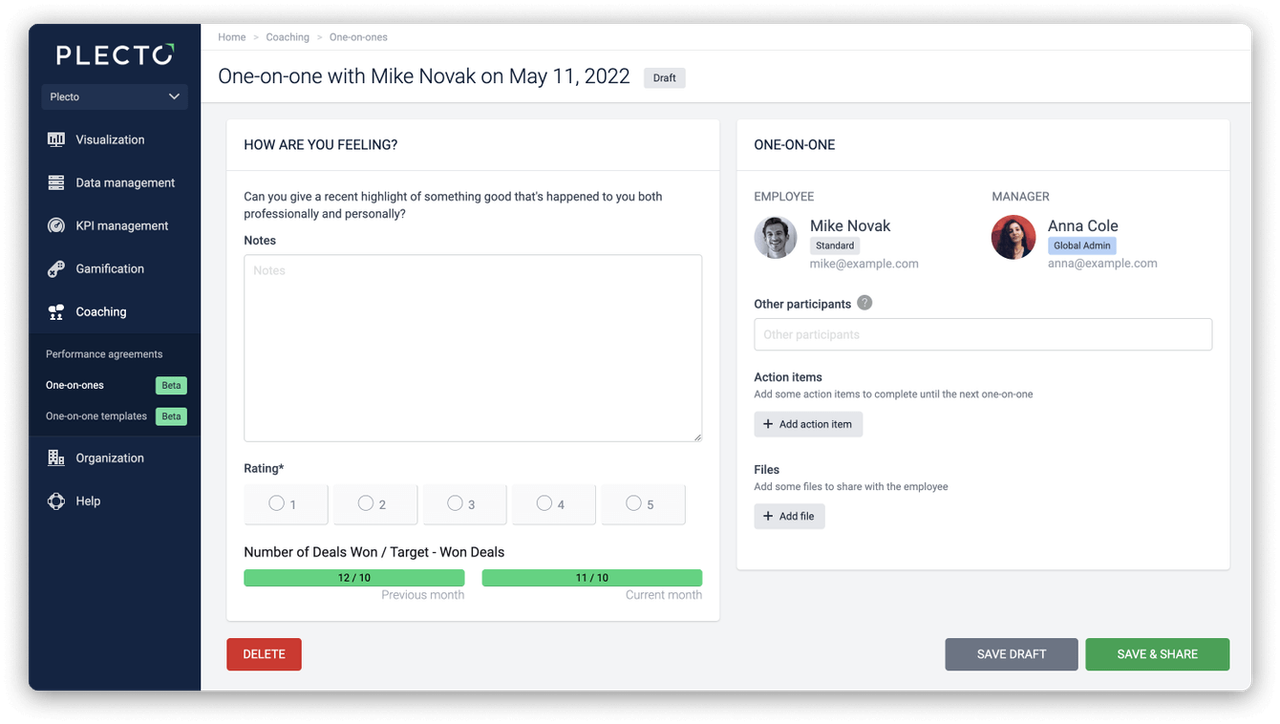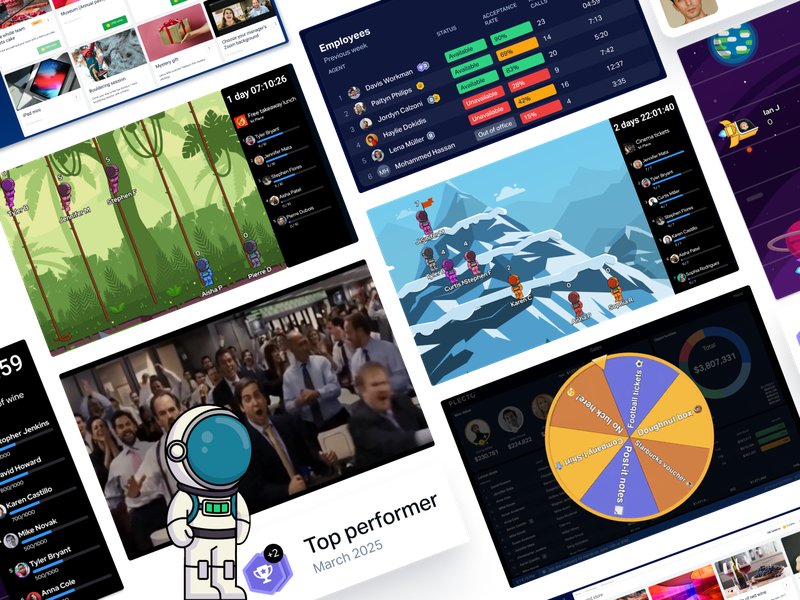According to Gallup’s 2023 State of the Global Workplace report, only 23 percent of employees are engaged at work. Disengaged employees underperform compared to their engaged peers, costing the global economy $8.8 trillion annually – the equivalent of 9 percent of the global GDP.
This article will tell you how to spot employees who are mentally checking out of their jobs and what you can do to bring them back into the fold and get them firing on all cylinders again.
3 Ways to Identify an Underperforming Employee
The most obvious sign of an underperforming employee is that they aren’t delivering the quality or quantity of work that’s expected – or it’s inconsistent with what they’ve delivered in the past.
Underperformance often comes about gradually with underperformers subtly scaling back their efforts and doing just enough to stay under the radar. Eventually, their work fails to meet their employer’s minimum expectations or keep pace with what their colleagues are producing, until their performance – or lack thereof – can no longer be overlooked. In extreme cases, former high-performers might do an about-face and deliver noticeably less quantity and quality than in the past.
Here are three early signs that you can use to spot underperforming employees early on to help you nip trouble in the bud.
1. Multiple Missed Deadlines
It’s normal for employees to have periods of lower productivity for various reasons – and there might be the odd assignment that takes longer than anticipated. One-off misses aren’t necessarily a symptom of underperformance. But there’s probably an issue if someone consistently underperforms compared to their colleagues or their own past achievements. It’s an issue if it becomes a pattern or if others in the department are completing similar work in the allotted time.

2. Poor Work Quality
Some underperformers will meet deadlines to avoid calling attention to themselves. However, they’ll deliver poor-quality work compared to their colleagues or even their own past performance. Pay attention to that adage, “quality over quantity.” Just because someone is hitting their deadlines doesn’t mean they’re doing a good job.
3. Low Engagement
Underperforming employees only do the bare minimum, so they aren’t good team players. This can manifest in poor collaboration or an unwillingness to take initiative or pull their weight on team projects. They might also appear aloof, distancing themselves from the rest of the team for fear of being “found out.” In meetings, you might notice that they aren’t listening or contributing to the discussion, or that they show up late– or not at all.
How to Help an Underperforming Employee – 5 Proven Tactics
Many employees start underperforming after they’ve decided to look for another job – and if we’re to believe Gallup’s findings, 51 percent of all employees are actively or passively job-seeking.
Underperforming and quiet quitting go hand-in-hand, and 85 percent of the quiet quitters in Gallup’s study said they’d be more engaged if their employers made changes in three key areas: engagement or culture (41%), pay and benefits (28%), and well-being (16%).
Unsurprisingly, these were also the main reasons people reported looking for a new job. It’s not a huge leap to suggest that supporting and motivating underperforming employees could not only get them back on track but also increase retention.
Are you curious about how to help an underperforming employee? Here are five things managers can do to motivate and support underperformers – and hopefully get them back on track.
1. Set clear goals
The onus is on the manager to make sure that their employees are crystal clear on what’s expected of them. Before jumping to the conclusion that an employee is underperforming, ask yourself whether you’re assigning work that’s specific, measurable, achievable, relevant, and with a clear deadline. Once you’ve set the parameters and agreed to the plan, it’s easier to identify who’s underperforming and who’s perhaps just lacking information and direction.
2. Provide coaching
Coaching sessions are an opportunity to assign work, check for understanding, and agree on a plan. Individual coaching also keeps employees accountable and provides a scheduled venue for status checks and constructive feedback. In addition, it’s an opportunity for managers to get to know what makes their employees tick, enabling them to coach more effectively and provide assignments that are a good fit for their skills. It can also help in offering the right opportunities for training and to assume more responsibility and take on more challenging tasks.
3. Offer professional development opportunities
A consistent coaching program combined with training opportunities and clear advancement potential can go a long way in discouraging underperformance. Company-paid professional development opportunities are an investment that can reengage underperforming employees by helping them to upskill, which demonstrates that the company wants them to excel. Training opportunities with transferable skills that could be used in a higher position show an investment in the employee’s career progression and their future with the company, and could motivate them to work toward a promotion.
4. Offer a competitive salary
One of the three main reasons people decide to look for a new job is that they don’t feel that they’re being fairly compensated. By then, they’re already underperforming – or are on the path to underperforming. Employers who give meager raises while increasing expectations and responsibilities will eventually face an epidemic of underperforming employees who feel underappreciated and demotivated. Employees’ efforts are often commensurate with their compensation. Especially in the current economy, a competitive wage that reflects the current labor market and each employee’s effort and results is crucial to keeping them engaged and productive.
5. Ask the right questions
It could be that the underperforming employee is in the wrong role, bored, working on assignments that are a mismatch for their skillset, or simply aren’t clear on expectations – all of which are easily remedied. They might also be dealing with stress, illness, or issues in their personal life. Sometimes the simplest approach is the best approach, so start an open dialogue as soon as you notice something is amiss and you’ll have the best possible chance of supporting the employee, helping them back to giving it their all.
Plecto’s real-time KPI dashboards are an excellent foundation for coaching sessions and for giving underperforming employees concrete goals to work toward while tracking their progress in a motivating and visual way.
Research shows that 90 percent of employees say that gamification makes them more productive at work. For employees needing a little nudge, Plecto also provides built-in gamification features including instant notifications and a Reward Store to help keep them engaged and motivated.
Sign up for a free 14-day trial and see how Plecto can help you motivate all of your employees – not just the underperformers.




